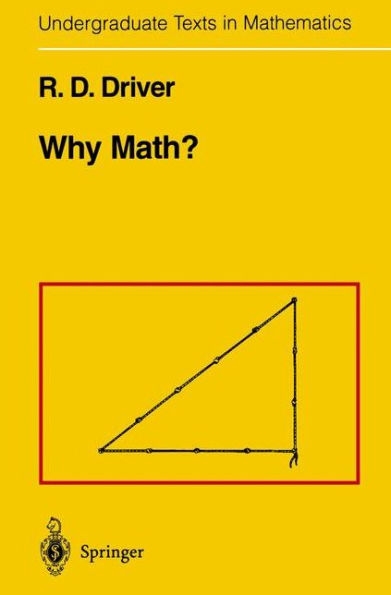Why Math?
This text aims to show that mathematics is useful to virtually everyone. And it seeks to accomplish this by offering the reader plenty of practice in elementary mathematical computations motivated by real-world problems. The prerequisite for this book is a little algebra and geometry-nothing more than entrance requirements at most colleges. I hope that users-especially those who "don't like math"-will complete the course with greater confidence in their ability to solve practical problems (without seeking help from someone who is "good at math"). Here is a sampler of some of the problems to be encountered: I. If a U. S. dollar were worth 1. 15 Canadian dollars, what would a Canadian dollar be worth in U. S. money? 2. If the tax rates are reduced 5% one year and then 10% in each of the next 2 years (as they were between 1981 and 1984), what is the overall reduction for the 3 years? 3. An automobile cooling system contains 10 liters ofa mixture of water and antifreeze which is 25% antifreeze. How much of this should be drained out and replaced with pure antifreeze so that the resulting 10 liters will be 40% antifreeze? 4. If you drive halfway at 30 mph and the rest of the distance at 50 mph, what is your average speed for the entire trip? 5. A tank storing solar heated water stands unmolested in a room having an approximately constant temperature of 80°F.
1101305410
Why Math?
This text aims to show that mathematics is useful to virtually everyone. And it seeks to accomplish this by offering the reader plenty of practice in elementary mathematical computations motivated by real-world problems. The prerequisite for this book is a little algebra and geometry-nothing more than entrance requirements at most colleges. I hope that users-especially those who "don't like math"-will complete the course with greater confidence in their ability to solve practical problems (without seeking help from someone who is "good at math"). Here is a sampler of some of the problems to be encountered: I. If a U. S. dollar were worth 1. 15 Canadian dollars, what would a Canadian dollar be worth in U. S. money? 2. If the tax rates are reduced 5% one year and then 10% in each of the next 2 years (as they were between 1981 and 1984), what is the overall reduction for the 3 years? 3. An automobile cooling system contains 10 liters ofa mixture of water and antifreeze which is 25% antifreeze. How much of this should be drained out and replaced with pure antifreeze so that the resulting 10 liters will be 40% antifreeze? 4. If you drive halfway at 30 mph and the rest of the distance at 50 mph, what is your average speed for the entire trip? 5. A tank storing solar heated water stands unmolested in a room having an approximately constant temperature of 80°F.
54.99
In Stock
5
1

Why Math?
233
Why Math?
233Paperback(1st ed. 1984. 2nd printing 1994)
$54.99
54.99
In Stock

Product Details
| ISBN-13: | 9780387944272 |
|---|---|
| Publisher: | Springer New York |
| Publication date: | 12/19/1994 |
| Series: | Undergraduate Texts in Mathematics |
| Edition description: | 1st ed. 1984. 2nd printing 1994 |
| Pages: | 233 |
| Product dimensions: | 6.10(w) x 9.25(h) x 0.36(d) |
From the B&N Reads Blog
